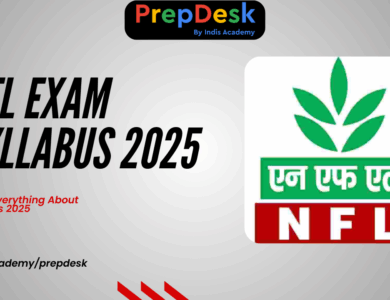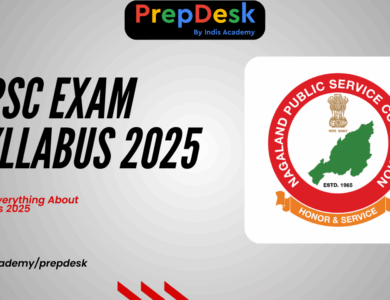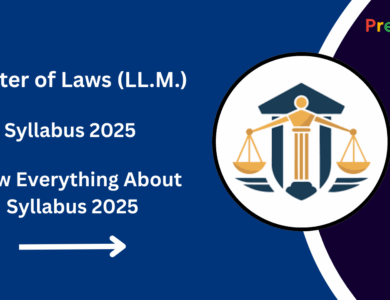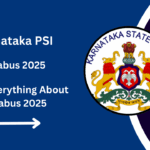CBSE Superintendent Exam 2025 Syllabus & Pattern | Tier‑1 + Tier‑2 PDF
Unlock your CBSE Superintendent exam strategy with the 2025 syllabus PDF, including Tier‑1 topics (Current Affairs, Logical Reasoning, Quant, Language, Computer) and Tier‑2 blueprint (Current Affairs, Indian History, Economy, Geography, Science & Technology, Public Admin, Polity). Plus, expert preparation tips and key download link.
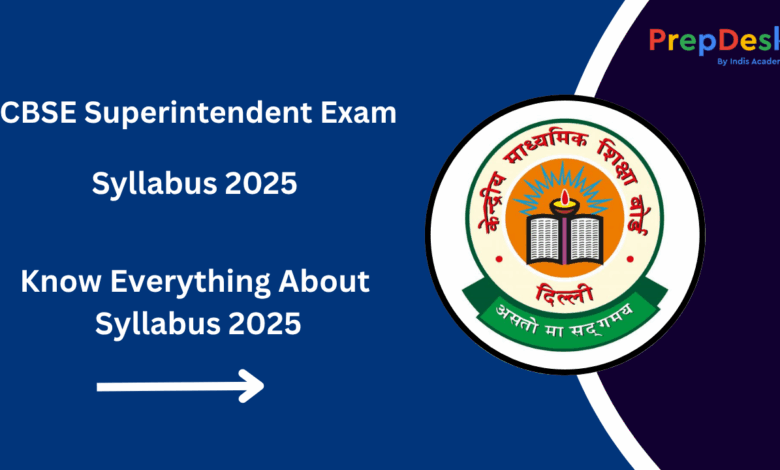
The Central Board of Secondary Education (CBSE) conducts the Superintendent examination to recruit qualified individuals for administrative roles. This post includes full syllabus details for Tier-1 and Tier-2, exam structure, topic-wise breakdown, marks distribution, recommended books, preparation tips, specialization paths, and syllabus PDF download options.
CBSE Superintendent Exam Overview
| STAGE | FORMAT | TYPE | DURATION & MODE | MARKS | PURPOSE |
|---|---|---|---|---|---|
| Tier‑1 | OMR-based MCQ (150 questions) | Objective | 3 hours (Offline/Bilingual) | 450 | Tests general awareness, reasoning, arithmetic, English/Hindi, basic computers |
| Tier‑2 | Objective (50 Qs) + Descriptive (30 Qs) | Objective + Descriptive | Combined format | 300 | Assesses academics, admin writing, governance understanding |
| Skill Test | Typing Test (35 wpm Eng / 30 wpm Hindi) | Qualifying | Computer-based | Qualifying | Assesses typing proficiency |
CBSE Superintendent Tier-1 Syllabus (150 Questions, 450 Marks)
Structure:
Total Questions: 150
Total Marks: 450
Each Section: 30 Questions, 90 Marks
Negative Marking: –1 per wrong answer
Duration: 3 Hours
Full Tier-1 Syllabus with Topics and Descriptions
| Section | Topics | Description |
|---|---|---|
| 1. General Awareness | National & International Events | Latest political, economic, and social events in India and globally. |
| Awards, Persons in News, Sports | Recent awards (Padma, Nobel), prominent personalities, and major sports tournaments. | |
| Budget, Five-Year Plans, Economy | Union Budget highlights, Five-Year Plans, basic economic terms like GDP and inflation. | |
| Science & Tech | Recent inventions, innovations in technology, ISRO missions, and general science awareness. | |
| Institutions & Committees | Important international bodies (UN, IMF, WTO, WHO) and national committees. | |
| 2. Logical Reasoning & Mental Ability | Series (Number/Alpha), Odd One Out | Identify patterns, find missing elements or the odd one in a logical sequence. |
| Coding-Decoding, Blood Relations | Alphabet/number coding, family-based logical problems. | |
| Syllogism | Logical deductions using statements and Venn diagrams. | |
| Direction & Ranking Tests | Position/direction of individuals and ranking order problems. | |
| Puzzles, Input-Output | Logical puzzle-solving and input-output pattern-based problems. | |
| 3. Numerical Ability & Data Interpretation | Number System, Averages, Percentages | LCM, HCF, simplification, average and percentage-based problems. |
| Profit & Loss, SI & CI, Ratio & Proportion | Basic arithmetic operations related to business math. | |
| Work, Time, Speed | Calculations based on efficiency, speed, distance, and time. | |
| Algebra & Geometry | Basic equations, shapes, perimeter, area, volume. | |
| Statistics: Mean, Median, Mode, Graphs | Data handling through graphs and basic statistics. | |
| 4. General Hindi & English | Sandhi, Samas, Idioms, One-word Substitution (Hindi) | Hindi grammar topics including word formation and meaningful substitutions. |
| Grammar Rules, Sentence Correction (Hindi) | Correct usage of verbs, tenses, sentence errors in Hindi. | |
| Grammar: Tense, Speech, Voice (English) | Grammar usage including direct-indirect, active-passive, and tenses. | |
| Synonyms, Antonyms, Fill in the Blanks (English) | English vocabulary enhancement and sentence-based questions. | |
| Comprehension, Letter Writing (English) | Reading comprehension and official/formal writing skills. | |
| Vocabulary Usage (English) | Idioms, phrases, common errors, and contextual meanings. | |
| 5. Computer Proficiency | Hardware: CPU, I/O Devices, Memory | Basic computer components and their functions. |
| MS Office (Word, Excel, PowerPoint) | Practical knowledge of document creation, formulas, charts, and formatting. | |
| Internet & Email | Web browsing, safe email practices, and basic email operations. | |
| Cybersecurity & Networking | Cyber threats, virus protection, basics of LAN, WAN, IP. | |
| Keyboard Shortcuts & File Systems | Common shortcuts (Ctrl+C/V/X/Z), file naming, extensions, folder navigation. |
CBSE Superintendent Tier-2 Syllabus (300 Marks)
Tier-2 consists of both Objective (50 Qs) and Descriptive (30 Qs) papers. Each part carries 150 marks.
| SUBJECT | OBJECTIVE (QS/MARKS) | DESCRIPTIVE (QS/MARKS) | TOPICS |
|---|---|---|---|
| Current Affairs & General Studies | 10 / 30 | 4 / 20 | Current events, institutions, policies, India’s role globally |
| Indian History & Culture | 4 / 12 | 4 / 20 | Ancient, medieval, modern history, movements, architecture |
| Indian Economy | 4 / 12 | 4 / 20 | GDP, Budget, Banking, Reforms, Inflation, PDS, e-Commerce |
| Indian Geography | 4 / 12 | 4 / 20 | Resources, Environment, Agriculture, Transport, Climate |
| Science & Technology | 4 / 12 | 4 / 20 | IT, Electronics, BioTech, Environment, Health, Innovations |
| Public Administration & Management | 8 / 24 | 4 / 20 | Theories, governance, ethics, organizational behavior |
| Constitution, Polity & Governance | 8 / 24 | 4 / 20 | Preamble, FRs/FDs, Legislature, Judiciary, Local Governance |
| English Language & Comprehension | 8 / 24 | 2 / 10 | Essay, report writing, comprehension, précis |
Download CBSE Superintendent Syllabus PDF
Download CBSE Superintendent syllabus PDF
Recommended Books
| SUBJECT | BOOKS |
|---|---|
| General Awareness | Lucent GK, Manorama Yearbook |
| Reasoning | R.S. Aggarwal – Verbal & Non-verbal Reasoning |
| Quantitative Aptitude | R.S. Aggarwal, Arun Sharma DI |
| English | Wren & Martin, Objective English – S.P. Bakshi |
| Hindi | Lucent Hindi, Arihant Samanya Hindi |
| Computers | Little Book of Computers, NIELIT Material |
| Polity | M. Laxmikanth – Indian Polity |
| Economy | Ramesh Singh – Indian Economy |
| History | Spectrum, NCERTs Class 6–12 |
| Science | Lucent General Science, NCERTs |
| Public Admin | Fadia & Fadia, Laxmikanth – Public Administration |
Preparation Strategy
- Understand the syllabus: Know the marks and weightage for all sections.
- Make a Study Plan: Cover daily news, weekly revision, and full mocks.
- Practice Descriptive Writing: Essays, letters, reports, government drafts.
- Work on Typing Speed: Use typing tools to achieve 35 WPM in English / 30 WPM Hindi.
- Mock Tests: Attempt full-length tests regularly (Tier-1 and Tier-2).
- Focus on Weak Areas: Especially language or descriptive parts.
- Revise Regularly: Static GK, formulas, grammar rules, computer basics.
Specialization Tips
- Admin Focused: Emphasize Public Admin, Governance, Constitution.
- Quant Focused: Score well in Reasoning, Math, and DI.
- Language Strong: Polish your essay and report writing skills.
- Tech Savvy: Excel in Computer Awareness and Skill Test.
Conclusion
The CBSE Superintendent exam demands a multidimensional preparation strategy with mastery in aptitude, language, general studies, and typing. Follow this detailed syllabus guide, rely on quality study material, and apply consistent effort. Whether your strength is logic, communication, or governance, a targeted approach will lead you to success.
Need help with mock tests, PDFs, or a 30-day study planner? Comment below and we’ll help!
